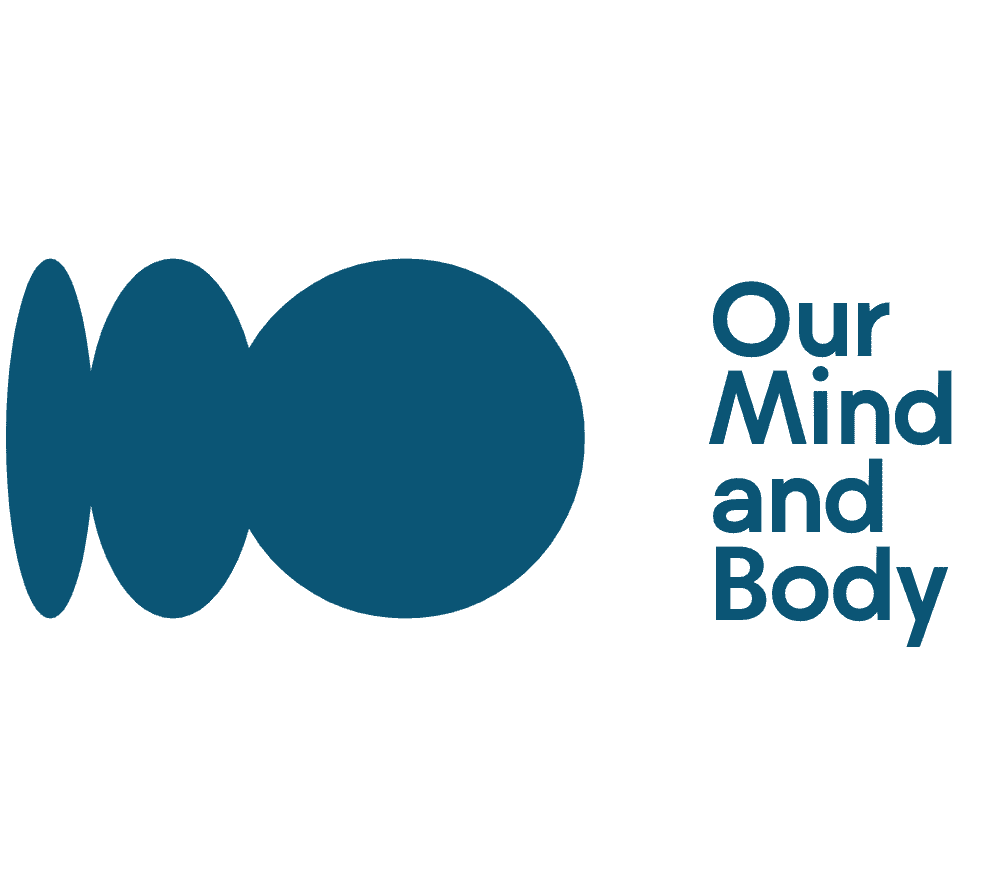Inspiration
Self-Confident – How This Power Word Can Make You Better

I believe that having self-confidence is essential for anyone aiming to achieve greatness. It motivates us to pursue our aspirations, face challenges, and grow into the best versions of ourselves. Believing in our abilities helps us emit a positive energy, bringing success closer to us. However, many people struggle with low self-esteem and lack of confidence, hurdles that can hinder them from unleashing their full potential.
In this article, I want to explore the power of self-confidence and how it can transform your life for the better. We’ll look at the definition of self-confidence, recognize its benefits, identify common causes of low self-esteem, and provide practical tips on how to build and strengthen your confidence over time.
Whether you’re looking to boost your career prospects or simply live a happier life, I’m confident that by embracing this powerful word you’ll be able to achieve your goals and unlock your true potential.
Key Takeaways
- Self-confidence is crucial for personal and professional growth, and can lead to better decision-making, handling difficult situations well, and effective communication with others.
- Building self-confidence requires conscious effort and practice, and techniques such as visualization exercises, affirmations, meditation, and learning new skills can be helpful.
- Identifying the causes of low self-confidence and challenging negative self-talk are important steps in building self-confidence.
- Prioritizing self-care, setting achievable goals, practicing assertiveness, and building a support system are all essential for building self-confidence and unlocking one’s true potential.
Understanding the Definition of Self-Confidence
Feeling sure of yourself is what self-confidence is all about, and it’s a feeling that can take you far in life! Understanding the definition of self-confidence is important because it helps you to recognize its significance in your personal and professional growth.
Self-confidence means having faith in your abilities, qualities, and judgments. It empowers you to face challenges with a positive attitude and achieve your goals.
Developing self-confidence requires techniques and exercises that vary from person to person. Some people may find visualization exercises helpful while others might prefer affirmations or meditation. Practicing these techniques regularly can help boost your self-esteem and develop a positive self-image.
You can also work on developing new skills or learning more about areas that interest you as this can increase your confidence levels.
Recognizing the benefits of self-confidence is essential as it motivates us to strive for our goals fearlessly. Self-confident individuals are more likely to make better decisions, handle difficult situations well, and communicate effectively with others. They are often respected by their peers and have an optimistic outlook on life.
Recognizing the importance of building one’s confidence level is crucial for achieving success in different aspects of life including personal relationships, career advancement, and overall happiness.
Recognizing the Benefits of Self-Confidence
I’m excited to discuss the benefits of self-confidence.
With greater resilience, I’ve been able to bounce back from setbacks and challenges with ease.
Increased motivation has pushed me to achieve my goals and excel in my personal and professional life.
Lastly, improved decision-making skills have allowed me to make confident choices that align with my values and aspirations.
Self-confidence truly is a powerful tool for success!
Greater Resilience
Like a tree with deep roots, I believe that being self-confident can help me build greater resilience and overcome setbacks. When faced with challenges or obstacles, a self-confident person is able to stand firm and weather any storm.
Here are some ways in which self-confidence can help me become more resilient:
-
Self-belief: When I have confidence in my abilities, I’m better equipped to handle difficult situations. This belief in myself helps me stay focused on finding solutions instead of dwelling on the problem.
-
Positive attitude: A positive mindset is essential for building resilience. By focusing on the good things in life and maintaining an optimistic outlook, I’m better able to bounce back from setbacks.
-
Adaptability: Being confident means that I’m open to change and willing to adapt when necessary. This flexibility allows me to adjust my approach when faced with unexpected challenges.
-
Support network: Having a strong support system of family, friends, or colleagues can also contribute to my resilience-building efforts. Knowing that there are people who believe in me and will be there for me during tough times gives me the strength to keep going.
With these tools at my disposal, I know that I can face any challenge head-on and come out stronger on the other side. As I move forward, this increased resilience will also lead to greater motivation as I tackle new goals and pursue my dreams with renewed vigor.
Increased Motivation
By cultivating a sense of resilience, you will find that your motivation to pursue your goals and overcome challenges will increase. When faced with obstacles, it can be easy to feel defeated and lose sight of why we set out on our journey in the first place. However, by developing a strong mindset and learning from failures instead of being deterred by them, we can increase our drive and determination to succeed.
One way to boost motivation is by setting clear goals for ourselves. This helps us stay focused and gives us something to work towards. Additionally, taking breaks when needed can also improve productivity in the long run. It’s important to remember that self-care is an essential part of achieving success. By prioritizing our mental and physical health, we are able to give our best performance and make more informed decisions going forward. Speaking of which…
Improved Decision-Making
Improving your ability to make decisions can lead to greater success in both personal and professional settings. When you have the confidence to trust your judgment, you’re more likely to take risks and pursue opportunities that align with your goals. This is where self-confidence comes into play – it helps you make better decisions by allowing you to believe in yourself and your abilities.
Boosting self-esteem through positive affirmations, visualization techniques, or seeking feedback from trusted sources can improve your decision-making skills. It allows you to think critically about a situation without being bogged down by self-doubt or fear of failure.
Improving judgment is not an overnight process, but with consistent practice and effort, anyone can develop their decision-making prowess.
In the subsequent section, we’ll explore identifying the causes of low self-confidence and how to overcome them.
Identifying the Causes of Low Self-Confidence
You struggle with believing in yourself and your abilities, which can often lead to feelings of inadequacy and doubt. This lack of confidence can hold you back from achieving your goals and reaching your full potential. But don’t worry, building self-esteem is possible.
One way to overcome self-doubt is to identify the causes of low self-confidence. Perhaps it stems from past experiences where you were criticized or put down by others, or maybe it’s due to comparing yourself to others and feeling like you don’t measure up. Once you understand the root cause of your insecurity, you can start working on addressing it.
Another approach is to focus on your strengths instead of dwelling on your weaknesses. Make a list of all the things that make you unique and special, whether it’s a talent, skill, or personality trait. Celebrate these qualities and remind yourself daily that you have something valuable to offer the world.
By doing so, you’ll begin to see yourself in a more positive light and feel more confident about who you are as a person. With these strategies in mind for overcoming self-doubt, we can move onto tackling negative self-talk and further building our confidence.
Challenging Negative Self-Talk
As we discussed in the previous section, low self-confidence can stem from a variety of causes. One common cause is negative self-talk, which can be incredibly damaging to our sense of self-worth. However, it’s important to remember that we have the power to challenge and overcome this negativity.
Overcoming self-doubt and building self-esteem is an ongoing process that requires conscious effort and practice. Here are some tips for challenging negative self-talk:
- Identify your negative thoughts: Take note of any recurring negative thoughts or beliefs you have about yourself.
- Challenge these thoughts: Ask yourself if there’s evidence to support these beliefs, or if they’re simply assumptions.
- Reframe your thoughts: Replace negative statements with more positive affirmations. Instead of "I’m not good enough," try "I’m capable and strong."
- Practice mindfulness: Focus on the present moment and observe your thoughts without judgment.
- Seek support from others: Talk to friends or a therapist who can offer encouragement and help you challenge negative beliefs.
By taking steps to challenge our own negative self-talk, we can begin to build a stronger sense of confidence in ourselves. It’s not always easy, but with practice, we can learn to overcome doubt and believe in our own abilities.
As we continue on this journey towards greater confidence and self-love, it’s important to also prioritize our own well-being through practicing self-care. Let’s explore some ways we can do that.
Practicing Self-Care
Take a moment to prioritize your well-being by indulging in activities that bring you joy and relaxation, such as reading a book or taking a long bath. Practicing self-care isn’t just about pampering yourself; it’s about taking care of your mental and physical health.
Mindfulness practices like meditation or yoga can also be incorporated into your daily routine to help you stay centered and reduce stress. Self-care routines are unique to each individual, so it’s important to find what works best for you.
Whether it’s going for a run, painting, or listening to music, make sure you schedule time for these activities on a regular basis. Not only will they help you feel more relaxed and rejuvenated, but they’ll also boost your confidence and self-esteem.
By prioritizing self-care, we invest in ourselves which ultimately allows us to show up as our best selves in all aspects of our lives. Setting achievable goals is the next step towards becoming more self-confident. It’s important to remember that progress takes time and effort, but with consistent practice, anything is possible.
Setting Achievable Goals
After practicing self-care, I’ve realized that one of the key factors in improving my self-confidence is setting achievable goals. It’s important to have a clear vision of what I want to achieve and break it down into smaller, manageable steps.
By doing this, I can prioritize my goals and focus on what truly matters. Setting achievable goals allows me to overcome setbacks more easily. When faced with challenges or obstacles along the way, I can assess the situation and adjust my plan accordingly. This helps me stay motivated and determined to reach my end goal.
To help visualize this process, imagine climbing a mountain:
- The summit represents your ultimate goal
- Each step you take is a smaller goal leading up to the top
- Sometimes there are rocky patches or steep inclines that slow you down or require you to take a different path
- But as long as you keep moving forward, even if it’s just one step at a time, you will eventually reach the top.
By prioritizing my goals and pushing through setbacks, I’m building up my self-confidence muscle. It takes practice and patience, but seeing progress towards achieving my dreams fuels me with positivity. With each accomplishment – no matter how small – comes an increased sense of belief in myself.
And when setbacks do arise (as they always will), I’m better equipped to handle them because I know that success is not about avoiding failure entirely but rather overcoming it on the road towards achieving greatness.
As we continue on this journey towards building our self-confidence muscles, let’s remember that taking risks and embracing failure are also crucial steps in our growth process. Let’s dive deeper into these topics together!
Taking Risks and Embracing Failure
Embracing failure and taking risks is an essential component of strengthening our self-assurance. When we step outside of our comfort zone and try new things, we’re bound to encounter discomfort and uncertainty. But it’s in these moments that we have the opportunity to grow and learn about ourselves.
When we embrace discomfort, we open ourselves up to finding opportunities that we may have otherwise missed. By taking risks, we allow ourselves to explore different paths and avenues that can lead us towards achieving our goals. And even if we do fail, it’s important to remember that failure isn’t the end-all-be-all. Rather, it’s a chance for us to reflect on what went wrong, learn from our mistakes, and use that knowledge to try again.
So don’t be afraid to take chances and embrace the unknown. You never know where it might lead you.
In fact, practicing assertiveness is another way in which you can further strengthen your self-confidence. By standing up for yourself and expressing your needs and wants in a clear manner, you demonstrate confidence in who you’re as a person.
Practicing Assertiveness
Practicing assertiveness not only helps you communicate your needs effectively, but also allows you to establish healthy boundaries in all aspects of your life. Through role playing exercises and seeking feedback, you can become more confident in asserting yourself. It’s important to remember that being assertive does not mean being aggressive or confrontational.
Role playing exercises are a great way to practice assertiveness in a safe environment. You can simulate scenarios where you need to stand up for yourself and practice different ways of communicating your needs. Seeking feedback from trusted friends or colleagues can also help you identify areas where you may need improvement and give you the opportunity to refine your skills.
By practicing assertiveness, you will begin to see positive changes in all areas of your life. You will be able to communicate more effectively with those around you and establish healthy boundaries for yourself. In the next section, we will explore how surrounding yourself with positive influences can further enhance your self-confidence and personal growth journey.
Surrounding Yourself with Positive Influences
Surrounding yourself with uplifting people and environments can have a major impact on your personal growth journey. Positive affirmations from supportive individuals can help you believe in yourself and your abilities. This positive reinforcement can also help you overcome self-doubt and negative thoughts that may hinder your progress.
Building a support system is essential as you work on building your self-confidence. These individuals will encourage you, challenge you, and hold you accountable for your goals. They will also provide constructive feedback when necessary, helping you grow both personally and professionally.
Incorporating positive influences into your life is an ongoing process, but it is crucial to continuously building and strengthening your self-confidence. By surrounding yourself with positivity, not only will you feel more confident in yourself, but others are likely to perceive this confidence as well.
So keep pushing forward, surround yourself with those who uplift you, and continue building upon the foundation of self-confidence that you’ve already established.
Continuously Building and Strengthening Your Self-Confidence
Surrounding myself with positive influences has been a game-changer in building my self-confidence. However, it’s important to note that this is just the beginning of the journey towards becoming self-confident.
To continuously build and strengthen my self-confidence, I’ve made it a priority to incorporate daily affirmations and seek feedback. Daily affirmations are powerful tools that help me focus on my strengths and embrace my uniqueness. By repeating positive statements about myself every day, I’m slowly rewiring my brain to believe in myself more deeply. This habit has not only boosted my confidence but has also helped me develop a more positive outlook on life.
Another crucial step in strengthening my self-confidence is seeking feedback from others. Feedback allows me to see things from different perspectives and identify areas where I can improve. Although it can be uncomfortable at times, getting feedback from people who care about me has helped me grow tremendously over the years.
Taking time to reflect on my accomplishments, surrounding myself with people who encourage growth, and setting achievable goals are other ways that I continuously build and strengthen my self-confidence.
Incorporating daily affirmations and seeking feedback are two powerful ways to build and strengthen your self-confidence. It takes time and effort, but the results are well worth it. As you continue on this journey towards becoming self-confident, remember that setbacks are inevitable but they don’t define you. Keep pushing forward, believe in yourself, and watch as your confidence grows stronger each day!
Frequently Asked Questions
How can I improve my self-confidence in the workplace?
Well, let me tell you, I used to be a complete mess in the workplace when it came to self-confidence. My palms would sweat, my voice would shake, and I’d often find myself fumbling over my words when speaking up in meetings or presenting ideas.
But then I discovered the power of mentorship programs and public speaking training. These resources allowed me to gain valuable skills and insights from experienced professionals while also honing my ability to communicate effectively with others.
It wasn’t an overnight fix, but over time, I found myself feeling more self-assured and capable in the workplace. So if you’re struggling with confidence at work like I was, don’t fret – there are plenty of tools and resources out there that can help you grow into your full potential as a professional!
Can low self-confidence be genetic?
In my experience, I’ve found that self-confidence can be influenced by both nature and nurture.
While genetics may play a role in determining certain personality traits or predispositions, it’s important to remember that environmental factors also have a significant impact on one’s mental health and self-esteem.
Childhood experiences, social support networks, and personal achievements can all contribute to the development of self-confidence.
It’s important to focus on building a strong sense of self-worth through positive affirmations, setting achievable goals, and seeking out supportive relationships.
By taking an active role in nurturing our own confidence, we can improve our mental health and overall well-being.
How does self-confidence affect relationships?
In my experience, self-confidence plays a crucial role in romantic relationships. When I’m confident in myself and my abilities, I’m more comfortable expressing my feelings and needs to my partner. This can lead to better communication and understanding.
On the other hand, when I lack confidence, I tend to hold back and avoid conflict. This can create tension and misunderstandings. To boost my self-confidence in social situations, I remind myself of my strengths and accomplishments. I try to focus on the present moment rather than worrying about what others may think of me.
It’s important to remember that everyone has insecurities. But having self-confidence allows us to overcome them and build stronger connections with those around us.
What are some effective ways to deal with self-doubt?
When I’m feeling doubtful of myself, I’ve found that positive self-talk can really make a difference. Instead of focusing on my weaknesses, I try to remind myself of my strengths and achievements.
Seeking support from others is also helpful – talking to friends or family members who believe in me can boost my confidence and help me see things from a different perspective.
It’s important to remember that everyone experiences self-doubt at times, but it doesn’t have to hold us back. By practicing self-compassion and seeking out positive influences, we can overcome our doubts and achieve our goals.
Is there a correlation between self-confidence and success?
There’s definitely a strong correlation between self-confidence and success. For instance, I had a friend who used to doubt herself constantly. She was always second-guessing her decisions and abilities, which led to missed opportunities and mediocre results.
However, once she started working on her self-confidence, she began taking risks and pursuing her goals with more determination. As a result, she landed a job at a prestigious company and has been excelling in her career ever since.
It’s not just about professional success either – having self-confidence can lead to benefits in your personal life as well. Overcoming self-doubt in academic settings can improve your grades, help you make new friends, and allow you to experience new things that you may have previously shied away from out of fear or insecurity.
So, if you want to live your best life possible, it’s crucial to work on building up your confidence levels!
Conclusion
So, there you have it – the power of self-confidence. It’s not just a buzzword that gets tossed around in motivational speeches; it’s a real force that can transform your life.
By believing in yourself and your abilities, you open up new doors and take on challenges with gusto. And yet, here’s the irony: the very act of trying to cultivate self-confidence can sometimes make us more anxious and insecure.
We get so focused on measuring up to some idealized version of ourselves that we forget to embrace our flaws and imperfections. So, let me leave you with this thought: self-confidence isn’t about being perfect or flawless – it’s about accepting yourself as you are right now, while striving towards becoming the best version of yourself tomorrow.
And when you do that, anything is possible!
Meet Kiran, the guiding light of wisdom behind the empowering content at OurMindAndBody.com. As a talented and compassionate writer, Kiran weaves words with grace and insight, sharing profound knowledge and practical advice to inspire positive transformations in the lives of readers.
With a background in psychology and a deep-rooted passion for well-being, Kiran brings a unique blend of expertise and empathy to her writing. Her journey into the realm of mindfulness, meditation, and yoga began as a personal quest for self-discovery and healing. Having experienced the profound benefits of these practices firsthand, Kiran is committed to empowering others to embark on their own journeys of self-exploration and growth.
Inspiration
Unveiling The Depths Of Spiritual Warfare

Spiritual warfare is a complex battle with various challenges and strategies at different levels. Essentially, this battle is against evil forces led by Satan, whose aim is to shake our faith and hinder our relationship with God.
In this article, we will delve into the depths of spiritual warfare, exploring the various levels of attack, strategies to overcome the devil, and effective ways to fight against spiritual attacks.
By understanding the nature of this battle and equipping ourselves with the right tools, we can navigate this spiritual warfare and align ourselves with God’s will.
Key Takeaways
- Spiritual warfare involves battling against Satan’s forces and can consume individuals who are not properly aligned with God’s purposes.
- There are three levels of spiritual warfare: flesh, devil, and worldly powers, with the highest level being level 3.
- The devil seeks to deceive, tempt, and destroy, but believers can overcome him through prayer, fasting, scripture reading, and maintaining a personal relationship with God.
- Effective strategies to combat the devil and engage in spiritual warfare include establishing a relationship with God through communication and obedience, engaging in activities that please God, and surrounding oneself with positive influences such as uplifting music and spiritual fellowship.
Levels of Spiritual Warfare
I think it’s important to understand the levels of spiritual warfare in order to effectively combat these battles. By recognizing spiritual attacks, we can better equip ourselves to fight back.
The levels of spiritual warfare include the flesh, devil, and worldly powers. The flesh level involves tangible battles that we face in our physical bodies and circumstances. The devil level focuses on the external enemy, Satan, who seeks to deceive and destroy. Lastly, the worldly powers level encompasses attacks on our faith and belief systems by societal influences.
Spiritual armor plays a crucial role in defending against these attacks. To combat these battles, we must arm ourselves with prayer, faith, and the word of God.
By staying vigilant and aware of the different levels of spiritual warfare, we can effectively overcome and align ourselves with God’s will.
Strategies Against the Devil
Establishing a personal relationship with God through communication and obedience can be a powerful strategy to overcome the devil’s temptations and deceptions.
In the midst of spiritual warfare, it is crucial to equip ourselves with spiritual armor to withstand the attacks of the devil.
Prayer, in particular, is a potent weapon that allows us to communicate with God and seek His guidance and strength.
Through prayer, we can overcome the devil’s attempts to deceive and tempt us, as we draw closer to God and align ourselves with His will.
Prayer not only strengthens our relationship with God but also empowers us to resist the devil’s influence.
By regularly engaging in open and honest communication with God, we can equip ourselves with the spiritual armor necessary to overcome the devil’s attacks and stand firm in our faith.
Overcoming Spiritual Attacks
To overcome spiritual attacks, it is important to recognize the signs and seek guidance and strength from God.
Spiritual warfare can manifest in various ways, including behavior changes and unexplained physical symptoms. By being aware of these signs, we can identify when we are under attack and take appropriate action.
Defending against spiritual attacks involves establishing a strong relationship with God through prayer, fasting, and studying the Bible. These practices help us to stay connected to God’s power and truth, enabling us to resist the enemy’s influence.
Additionally, surrounding ourselves with positive influences such as uplifting music and spiritual fellowship can provide protection and support.
It is crucial to remember that spiritual attacks are not limited to believers; non-believers can also be targeted. By recognizing spiritual warfare and actively defending against it, we can overcome evil and align ourselves with God’s will.
Frequently Asked Questions
How can I differentiate between a spiritual attack and a normal life struggle?
Understanding spiritual discernment is crucial in differentiating between a spiritual attack and a normal life struggle. Recognizing signs of spiritual attacks, such as sudden behavior changes or unexplained physical symptoms, can help discern the source of the struggle.
Can spiritual warfare affect my physical health?
Yes, spiritual warfare can have a mental and emotional impact which can in turn affect physical health. However, through engaging in spiritual warfare, healing can occur on all levels, including physical well-being.
Is it possible to unknowingly invite spiritual attacks into my life?
Yes, it is possible to unknowingly invite spiritual attacks into my life. Recognizing spiritual attacks involves being aware of signs such as behavior changes and unexplained physical symptoms. It is important to protect oneself through prayer and positive influences.
Are there specific prayers or rituals that can protect me from spiritual attacks?
Prayer techniques and spiritual cleansing practices can provide protection from spiritual attacks. By seeking God’s guidance, regularly praying, and engaging in rituals such as smudging or anointing, I can create a spiritual shield against negative forces.
Can spiritual warfare affect my relationships with other people?
Spiritual warfare can impact my relationships by affecting my emotional well-being. Forgiveness plays a crucial role, as it allows for healing and restoration. It is important to address the spiritual battles within ourselves to maintain healthy connections with others.
Conclusion
In conclusion, spiritual warfare is a complex battle that occurs on multiple levels. It involves attacks on faith and belief systems, with the ultimate goal of undermining humanity’s relationship with God. This battle includes the flesh, the devil, and worldly powers.
However, individuals can overcome the devil’s tactics by establishing a personal relationship with God and engaging in spiritual practices. These practices include prayer, fasting, and studying the Bible.
Some may argue that spiritual warfare is subjective and lacks tangible evidence. However, it is important to remember that the battle against evil is not always visible. Its effects can be felt through behavior changes and unexplained physical symptoms.
To effectively fight against spiritual attacks, individuals must actively seek God’s guidance and surround themselves with positive influences. By doing so, they can align themselves with God’s will and overcome the challenges of spiritual warfare.
Meet Kalinda, the passionate and visionary Editor-in-Chief of OurMindAndBody.com. Kalinda is a beacon of light in the realm of holistic well-being, and her mission is to positively impact the lives of others by inspiring them to embrace a healthier and more fulfilling lifestyle.
With a deep-rooted love for meditation, yoga, and spirituality, Kalinda’s journey toward self-discovery and personal growth started at a young age. She found solace and strength in these practices, which not only helped her cope with the challenges of life but also provided her with a profound sense of purpose. Eager to share the transformative power of these ancient disciplines, Kalinda embarked on a path to spread awareness and understanding.
Inspiration
The Mighty Gamabunta: Jiraiya’s Spiritual Beast

In the Naruto series, Gamabunta is known as Jiraiya’s legendary mystical creature and spiritual companion, showing impressive strength. With his ability to change shape, summon smaller toads, and utilize natural energy, Gamabunta proves to be a valuable ally to Jiraiya.
Together, they form an unstoppable team, communicating telepathically and coordinating their attacks in battle.
In this article, we will delve into the description, abilities, various names, and the first appearance of the mighty Gamabunta, shedding light on his significance in the Naruto universe.
Key Takeaways
- Gamabunta is Jiraiya’s mystical animal companion, a giant toad from Mount Myoboku.
- Gamabunta provides strategic support in combat, including transportation and close-range combat.
- Gamabunta has unique abilities such as shape-shifting, summoning smaller toads, and absorbing natural energy.
- The most commonly accepted name for Jiraiya’s spiritual beast is Gamabunta.
Description and Abilities
Gamabunta, Jiraiya’s spiritual beast, is a giant toad with incredible abilities. These abilities include shape-shifting, summoning smaller toads, and absorbing natural energy. Gamabunta plays a crucial role in Jiraiya’s training and development as a shinobi.
With Gamabunta’s strategic support and formidable combat skills, Jiraiya is able to enhance his combat capabilities and transportation. The strong bond between Jiraiya and Gamabunta is evident in their telepathic communication, which increases coordination and effectiveness in battle.
Furthermore, Gamabunta’s significance extends beyond Jiraiya to Naruto. As a summoning animal for both Jiraiya and Naruto, Gamabunta has a profound impact on their growth as shinobi. Through their encounters and battles together, Gamabunta provides guidance and support to Naruto, helping him develop his skills and overcome challenges.
This relationship between Naruto and Gamabunta showcases the importance of mentorship and the influence of spiritual beasts in the Naruto universe.
Various Names
Toad Boss, also known as the Great Toad Sage, is a prominent character in the Naruto series and serves as my loyal companion throughout my journeys.
Gamabunta holds great cultural significance in Japanese folklore, as it is based on the mythical creature known as the toad.
In the Naruto universe, Gamabunta plays a crucial role in shaping my character development. As a summoning animal, Gamabunta’s immense power and wisdom have guided me through countless battles and taught me important life lessons.
Our telepathic communication enhances our coordination, allowing us to strategize effectively in combat.
Gamabunta’s presence also showcases my growth and maturity as a ninja, as I gain the respect and trust of such a formidable and revered beast.
Together, we have faced many challenges, and our bond continues to strengthen as we overcome obstacles and protect the ninja world.
Summoning and First Appearance
Summoning my loyal companion was a pivotal moment in my battle against Orochimaru. An incredible force emerged to aid me – the Summoning Technique, a jutsu I had mastered. It allowed me to summon Gamabunta, the mighty toad, to the battlefield.
As he appeared in a swirl of smoke, Gamabunta’s massive size and power commanded attention. His first appearance showcased his formidable abilities. He unleashed a devastating Giant Toad Body Slam, crushing our enemies with his sheer strength.
With Gamabunta by my side, I felt invincible. His impressive water-style jutsu and unrivaled combat skills were at my disposal. The significance of Gamabunta’s first appearance in Naruto cannot be understated. It marked the beginning of a partnership that would prove crucial in numerous battles to come.
Frequently Asked Questions
How did Jiraiya first form a bond with Gamabunta?
Jiraiya formed a bond with Gamabunta through the Summoning Technique, where he summoned the giant toad to aid him in battle. Their bond is significant as Gamabunta provides strategic support and can understand human language, allowing for better coordination with other summoning animals.
Can Gamabunta communicate with other animals besides Jiraiya?
No, Gamabunta cannot communicate with other animals besides Jiraiya. His ability to communicate only extends to telepathic communication with Jiraiya, which enhances their coordination in battle but does not involve other animals.
What is the origin of Gamabunta’s name?
The name Gamabunta holds significant meaning in Japanese folklore. It symbolizes the connection between Jiraiya’s ninja techniques and the wisdom of the toad sage. Gamabunta also acts as a mentor and protector for Jiraiya, guiding him in his early days as a ninja.
Are there any other summoning animals that Jiraiya can call upon besides Gamabunta and Gamakichi?
No, there are no other summoning animals that Jiraiya can call upon besides Gamabunta and Gamakichi. Jiraiya’s summoning technique is unique and powerful, placing him among the top summoners in the Naruto series.
Has Gamabunta ever been defeated in battle?
In the world of Naruto, Gamabunta is a force to be reckoned with. Compared to other summoning animals, he is incredibly powerful. However, he does have his weaknesses. While he can defeat many spiritual beasts in battle, he is primarily limited to fighting alongside Jiraiya.
Conclusion
In conclusion, Gamabunta is a formidable and powerful ally to Jiraiya in the Naruto series. With his shape-shifting abilities, summoning smaller toads, and absorbing natural energy, Gamabunta proves to be a formidable force in combat.
His telepathic communication with Jiraiya enhances their coordination and makes them a nearly invincible duo. Known by various names such as Toad Boss and Great Toad Sage, Gamabunta is considered one of the strongest summoning animals in the Naruto universe.
An interesting statistic to note is that Gamabunta made his first appearance during the battle against Orochimaru using the Summoning Technique, showcasing his significance in Jiraiya’s journey.
Meet Kalinda, the passionate and visionary Editor-in-Chief of OurMindAndBody.com. Kalinda is a beacon of light in the realm of holistic well-being, and her mission is to positively impact the lives of others by inspiring them to embrace a healthier and more fulfilling lifestyle.
With a deep-rooted love for meditation, yoga, and spirituality, Kalinda’s journey toward self-discovery and personal growth started at a young age. She found solace and strength in these practices, which not only helped her cope with the challenges of life but also provided her with a profound sense of purpose. Eager to share the transformative power of these ancient disciplines, Kalinda embarked on a path to spread awareness and understanding.
Inspiration
Unveiling Pastor Jerry Eze’s Spiritual Father: A Catalyst For Growth

In the realm of spiritual growth and progress, the revelation of Pastor Jerry Eze’s mentor marks a pivotal moment in his journey.
This divine connection with Pastor Enoch Adeboye, a respected and revered figure, has become a cornerstone of Pastor Eze’s development.
Their relationship is a testament to the power of seeking guidance, honor, and mentorship in ministry.
As we delve into their profound bond, we will witness the transformative impact that a spiritual father can have on one’s ministry, vision, and spiritual walk.
Key Takeaways
- Pastor Jerry Eze’s spiritual father has had a cordial and healthy relationship with him, providing mutual respect and guidance that has influenced Pastor Jerry Eze’s ministry.
- Seeking guidance and mentorship in ministry is essential, as demonstrated by Pastor Jerry Eze’s own example, and can have a positive impact on one’s spiritual journey and ministry.
- Pastor Jerry Eze has multiple spiritual mentors in addition to his primary spiritual father, which is a common practice among ministers, and these mentors provide different perspectives and insights that enrich his spiritual journey.
- Pastor Jerry Eze’s spiritual father has had a significant positive impact on his ministry, influencing his mission to spread the gospel, shaping his ministry vision, providing guidance in ministry strategies, and supporting him in facing challenges.
Who is Pastor Jerry Eze’s Spiritual Father?
My spiritual father, Pastor Jerry Eze, has been greatly influenced and guided by Pastor Enoch Adeboye. This has resulted in a strong and healthy relationship filled with mutual respect and guidance.
Pastor Adeboye, as a spiritual father, holds significant importance in Pastor Jerry Eze’s life and ministry. He serves as a source of spiritual covering, offering guidance and direction in ministry decisions.
Through their relationship, Pastor Jerry Eze finds support and encouragement during times of challenges. Pastor Adeboye acts as a catalyst for growth and fruitfulness.
This bond of mentorship provides a solid foundation for Pastor Jerry Eze’s spiritual journey. It empowers him to walk confidently in his calling.
The significance of having a spiritual father like Pastor Adeboye cannot be understated. He is a role model and example, offering wisdom and experience that shape and strengthen Pastor Jerry Eze’s ministry.
Importance of Seeking Guidance
Seeking guidance from experienced leaders is crucial in ministry because mentorship and guidance play a vital role. As ministers, we can benefit greatly from the wisdom and guidance of those who have walked the path before us. These experienced leaders have valuable insights to share, having gone through similar experiences. They can nurture our spiritual growth through their relationships with us.
By seeking guidance, we open ourselves up to the wisdom and experience of others. We can learn from their successes and failures, gaining new perspectives that can shape our ministry. Mentorship provides us with accountability and direction, empowering us to sharpen our skills and talents. This helps us build strong foundations for effective service.
It’s important to understand that seeking guidance is not a sign of weakness. Instead, it shows humility and a desire to grow. So, let’s embrace the opportunities to learn from experienced leaders and nurture our spiritual growth through meaningful relationships.
Impact on Pastor Jerry Eze’s Ministry
Through my relationship with my spiritual father, Pastor Enoch Adeboye, I have been guided and supported in shaping my ministry vision and strategies. His influence on my mission to spread the gospel has been profound. His wisdom and guidance have strengthened my faith and commitment to serving God’s people.
Having Pastor Adeboye as a spiritual father has provided me with a solid foundation and a source of encouragement in the face of challenges. His support has been unwavering, and his guidance has been instrumental in helping me navigate the complexities of ministry.
I am forever grateful for his mentorship and the impact he has had on my life and ministry. His influence has not only shaped my mission but also deepened my relationship with God. Through his guidance, my faith has grown stronger, and I am more equipped to fulfill the calling that God has placed on my life.
Lessons from their Relationship
I have learned valuable lessons from my relationship with Pastor Enoch Adeboye. One important lesson is the importance of seeking guidance from experienced leaders and embracing mentorship opportunities. Through our connection, I have discovered that growth in ministry is greatly accelerated when we humble ourselves and learn from the wisdom of others.
My spiritual father has taught me the significance of respecting and honoring those who have gone before us, paving the way for our own journey. He has shown me the power of accountability and the nurturing of spiritual gifts and talents. Through his guidance, I have gained a deeper understanding of my purpose and the mission I have been called to fulfill.
The lessons I have learned through this relationship have not only shaped my ministry, but have also transformed my life. Growth through mentorship is a beautiful and essential aspect of every minister’s journey, and I am grateful for the impartation of wisdom and experience that I have received.
Role of Spiritual Fathers in Ministry
Having a mentor in ministry is like having a guiding light that illuminates the path and empowers us to fulfill our purpose.
Spiritual fathers play a crucial role in nurturing leaders and imparting wisdom and experience. They provide guidance and direction, shaping the ministry vision and mission. They impart valuable insights and perspectives that accelerate spiritual growth and sharpen skills and talents.
Spiritual fathers support and encourage ministers, strengthening their spiritual foundations and empowering them for effective service. They offer accountability and guidance, nurturing spiritual gifts and talents. They provide protection and covering, and their wisdom and experience become accessible resources for ministers.
The presence of a spiritual father is a catalyst for growth, helping us navigate through challenges and inspiring us to walk in faith and fruitfulness.
Frequently Asked Questions
How did Pastor Jerry Eze establish a relationship with his spiritual father?
Establishing a connection with my spiritual father was a divine appointment. Through seeking guidance from experienced leaders and embracing mentorship, I nurtured the mentorship, learning from his wisdom and experiencing spiritual growth.
What specific guidance and mentorship has Pastor Jerry Eze received from his spiritual father?
Oh, let me tell you about the guidance and mentorship I’ve received from my spiritual father. His wisdom and experience have truly been a catalyst for my growth. He has transformed my ministry and shaped my vision.
How has Pastor Jerry Eze’s spiritual father influenced his ministry strategies and mission?
Pastor Jerry Eze’s spiritual father has been a catalyst for growth in my ministry. His influence on my ministry strategies and mission has been invaluable, guiding me in spreading the gospel, shaping my vision, and strengthening my faith and commitment.
Are there any challenges that Pastor Jerry Eze has faced in his ministry that his spiritual father has helped him overcome?
In my ministry, challenges have come my way, but my spiritual father’s mentorship has been a guiding light. Like a lighthouse in stormy waters, he has helped me navigate through difficulties and emerge stronger than before.
Can you provide any specific examples of how Pastor Jerry Eze’s spiritual father has shaped his spiritual growth and development?
Pastor Jerry Eze’s spiritual father has had a transformational impact on his spiritual growth and development. Through their guidance and mentorship, he has gained spiritual insights that have shaped his ministry and mission.
Conclusion
In my journey as a minister, I have discovered the immense value of having a spiritual father. Pastor Enoch Adeboye has been that guiding light for me, a catalyst for growth in my ministry.
Through his wisdom, guidance, and support, I have been able to navigate challenges, sharpen my skills, and stay focused on my mission to spread the gospel.
As the adage goes, ‘A wise man learns from his mistakes, but a wiser man learns from the mistakes of others.’ The role of a spiritual father is to impart wisdom and help us avoid unnecessary mistakes.
Their presence in our lives brings accountability, protection, and a deepening of our spiritual walk. Let us all seek out mentors and spiritual fathers who can help us grow and flourish in our faith.
Meet Kalinda, the passionate and visionary Editor-in-Chief of OurMindAndBody.com. Kalinda is a beacon of light in the realm of holistic well-being, and her mission is to positively impact the lives of others by inspiring them to embrace a healthier and more fulfilling lifestyle.
With a deep-rooted love for meditation, yoga, and spirituality, Kalinda’s journey toward self-discovery and personal growth started at a young age. She found solace and strength in these practices, which not only helped her cope with the challenges of life but also provided her with a profound sense of purpose. Eager to share the transformative power of these ancient disciplines, Kalinda embarked on a path to spread awareness and understanding.
-

 Personal Growth2 months ago
Personal Growth2 months agoThe Power Of Kindness: Cultivating Happiness, Connection, And Personal Growth
-

 Meditation1 day ago
Meditation1 day agoUnderstanding Spiritual Attacks: Types, Signs, And Protection
-

 Aura1 week ago
Aura1 week agoUnderstanding The Grey Aura: Balance, Neutrality, And Personal Growth
-

 Spirituality3 months ago
Spirituality3 months agoThe Power Of Spiritual Connection: Definition, Importance, And Ways To Achieve
-

 Spirituality2 months ago
Spirituality2 months agoStarting Your Spiritual Journey: Self-Reflection, Growth, And Connection
-

 Spirituality3 months ago
Spirituality3 months agoConnecting Spirituality And Daily Life: Embracing Universal Values
-

 Spirituality3 months ago
Spirituality3 months agoThe Mystical Realms: Exploring Spiritual Dimensions
-

 Meditation3 weeks ago
Meditation3 weeks agoThe Symbolic Significance Of Sand Dollar: Spiritual Meanings And Cultural Connections




















